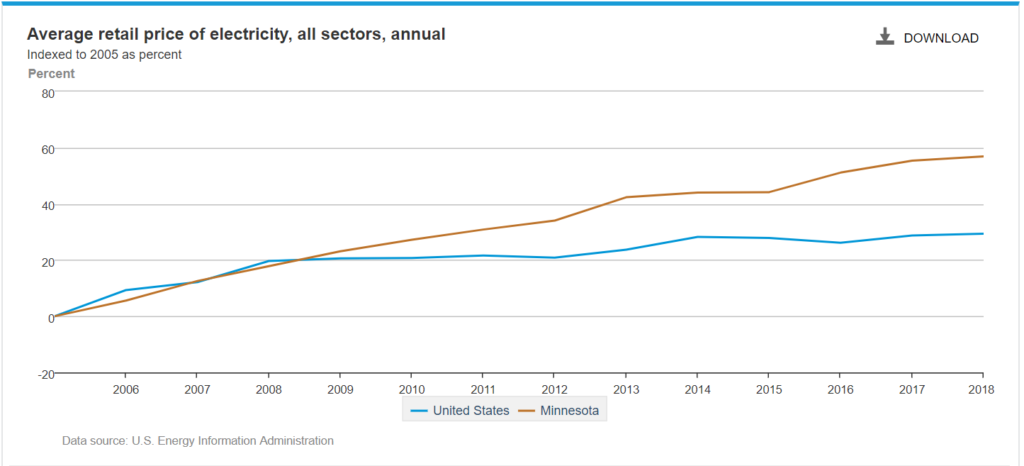My Response to Fox 9’s “The Last Gasp of Coal”
Earlier this week, Fox 9 ran a story entitled “The Last Gasp of Coal,” which suggested that coal plants are costing ratepayers a lot of money because of a practice known as self scheduling. Several of our readers sent this story to me, so I decided to reach out to Tom Lyden, the lead reporter on this story, to offer a perspective other than those shared by Fresh Energy, and the Union of Concerned Scientists. You can read my email to Mr. Lyden below.
Dear Mr. Lyden,
My name is Isaac Orr, and I am a policy fellow specializing in energy and environmental policy at Center of the American Experiment, a free-market think tank located in Golden Valley, Minnesota.
I’m writing today to offer another perspective on the segmented entitled “The Last Gasp of Coal.”
While self-scheduling can increase costs by causing coal plants to operate when wholesale power prices are depressed as a result of an abundance of wind on the system, in the long run, depressed wholesale power prices cause electricity prices to increase as reliable, baseload generators are forced off the system.
This article by Fresh Energy discusses how wind depresses wholesale prices. This happens in part because there is no fuel cost, but also because wind is subsidized. This fact allows wind operators to make money even when the wholesale price of electricity goes negative.
Low or negative prices can cause power companies to retire their coal and nuclear plants before the end of their useful lifetimes because they cannot easily ramp up or down. When prices are negative, these plants lose money by continuing to operate because it would be more expensive to shut them down.
The closure of baseload power plants has negative consequences, however, because it leads to much higher prices during periods when electricity demand is high, or when wind production is low.
This occurred in Texas last August, when peak electricity demand and almost no wind on the system led electricity prices to hit $9,000 per megawatt hour, according to the Houston Chronicle. The large spike in prices caused electricity rates for Texas residents to increase by 43 percent last year.
The price spikes occurred because several of the baseload coal plants in Texas have retired, eliminating the generation capacity that would normally limit the upward mobility of electricity prices.
In Australia, electricity prices fluctuate wildly, as prices go negative during periods of high wind and sun, and spike when these resources are not available. As a result, the average wholesale cost of electricity increased to more than $100 per megawatt hour after Australia closed two baseload coal plants in 2016 and 2017 due to negative pricing, as explained in this article in The Guardian. The trend is also apparent in the graph below.
It is also important to note that in Minnesota, lower wholesale power prices have not translated into lower retail prices. In fact, data from the U.S. Energy Information Administration show Minnesota’s retail rates have risen 27 percent faster than the national average since 2007, when we passed our renewable energy standard.

The capital spending on new wind turbines, solar panels, and transmission lines to accommodate them has exceeded $15 billion since 2007, which is driving the increase in retail electricity rates. While these sources of electricity are resulting in seasonally lower wholesale electricity prices during windy “shoulder months,” they have also been the primary reason why retail electricity price have increased over the last 13 years. The increase in retail rates due to spending on wind and solar has far outweighed the costs associated with self-scheduling, to the detriment of low-income households who struggle to pay their electric bills.
I would be happy to discuss this issue in greater detail, and I am also happy to contribute to your stories on energy in the future.
Looking forward to hearing back from you.
Sincerely,
Isaac
Isaac Orr
Policy Fellow
Center of the American Experiment